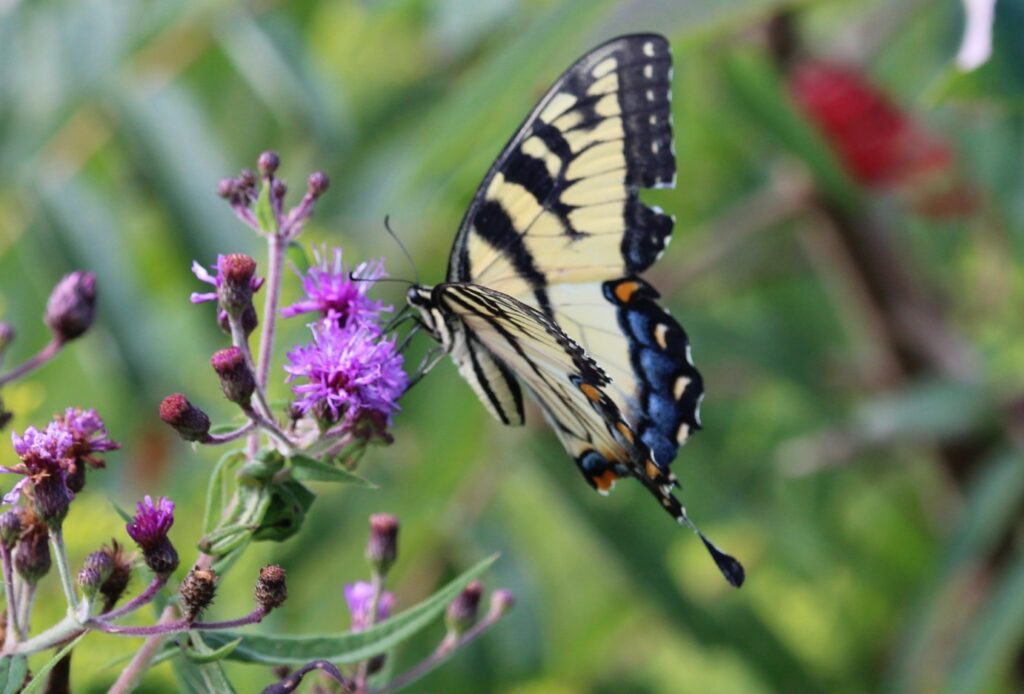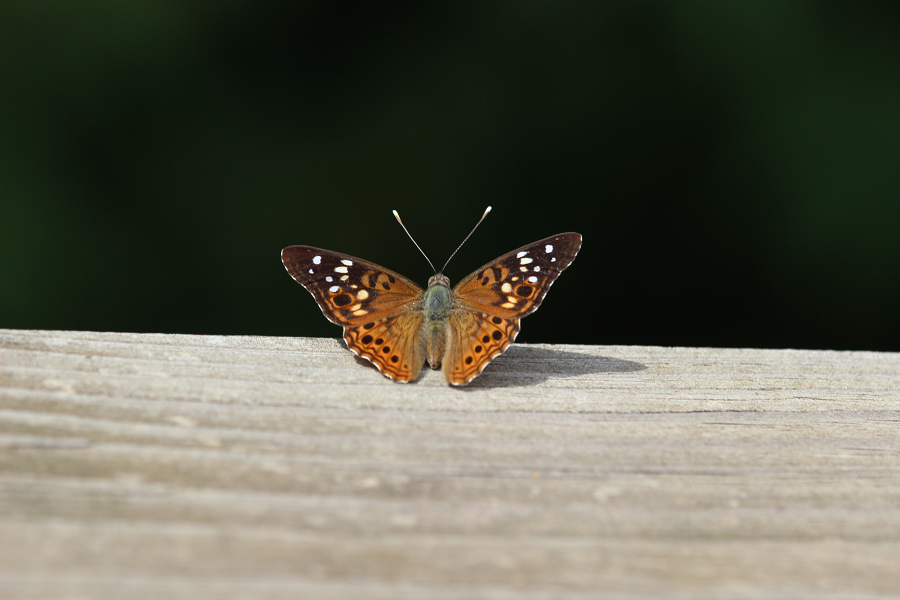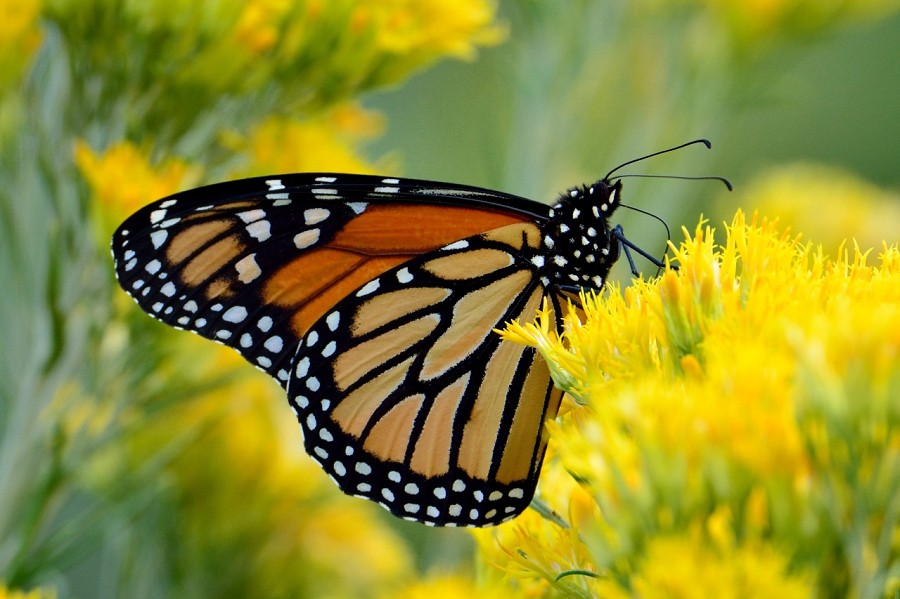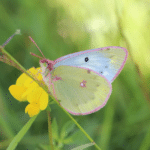Butterflies add a magical touch to our gardens with their colorful wings. To welcome these graceful pollinators, create a natural space rich in nectar-producing plants such as lavender, buddleia or lantana. A diversified, sunny garden sheltered from the wind, with a water feature and wild areas, will quickly become a haven of peace for these enchanting insects. Discover our tips for transforming your outdoor space into a veritable butterfly sanctuary.

How to bring butterflies to your garden: 3 key rules
Here are 3 simple rules to follow to attract and welcome as many butterflies as possible to your garden:
- avoid using pesticides and herbicides
- plant nectariferous plants to feed butterflies,
- let local plants grow (the famous “weeds” so precious to our butterflies) to feed their caterpillars and attract the females looking for a place to lay their eggs.
1/ Natural gardening
Pesticides have been responsible for the collapse of insect populations, and therefore butterfly populations, since the 1970s. These pesticides are now ultra-powerful and eradicate our precious butterflies. Herbicides are also highly detrimental to butterflies, destroying the weeds that are essential to our butterflies’ caterpillars.
So create a sanctuary for butterflies by systematically refusing to use pesticides and herbicides in your garden. It’s also much better for your health and that of your family!

2 / Essential nectar-producing plants in the garden
Nectar-rich flowers are a natural feast for our winged friends. Lavender attracts Pieridae and Papilionidae. Buddleia for Nymphalidae and Pieridae. Lantana… there are many plants that our butterflies love.
Create clumps of plants of different heights. Dwarf phlox in the border works perfectly with purple echinacea in the center and sunflowers at the bottom of the bed. This combination guarantees staggered flowering from spring to autumn.
Aromatics such as lemon balm and oregano also attract butterflies in the garden thanks to their fragrant nectars. A practical tip: plant them in full sun to maximize their nectar production.
Some butterflies will also be attracted by rotting fruit (Nymphalis, Apatura…), so leave a few in a dish halfway up your garden.
3/ Let local plants grow
For aesthetic reasons, our gardens are full of non-local plants that our butterflies don’t eat. Without local plants (the famous “weeds” for some…), female butterflies won’t visit your garden and no butterflies will be born.
So let dandelions, nettles and alfalfa grow as long as possible. Don’t mow too much. Don’t pick up too many weeds. We advise you to leave a part of your garden with wild plants only, and to mow it only twice a year.
Local plants are what gardeners often forget, even though they’re the most important thing for attracting butterflies.
Which flower to choose according to the season?
The first spring blooms begin with wallflowers in March. Lilac and poet’s carnations take over in May, attracting lemon butterflies in particular.
Summer marks the peak of visits, from June to August. The flower meadow with cosmos and zinnias becomes a multicolored ballet. Sedum spectabile then takes over, its pink or mauve flowers attracting a large number of butterflies until October.
For late autumn, opt for warm-colored asters and goldenrod. These flowers are essential sources of food before the last butterflies of the season hibernate.
Creating spaces conducive to biodiversity
The creation of a variety of spaces is essential for welcoming a diverse range of wildlife. Create sunny areas with woodpiles and flat stones where butterflies can warm up. These areas will also provide shelter for chrysalises.
A natural meadow, even in a small area, will enrich your garden considerably. Leave a few nettles to grow in a secluded corner: they provide refuge for caterpillars of many species, such as the peacock butterfly.
Foraging insects are particularly fond of wild spaces. Set aside a patch of land where vegetation grows freely, without mowing or weeding. This natural approach encourages the establishment of a rich micro-fauna, attracting many butterflies at the same time.
A watering hole to attract butterflies
A butterfly-friendly watering hole consists of a shallow dish lined with pebbles or damp sand. This configuration allows them to land safely to hydrate. Place your device in a quiet, sunny spot in the garden.
The creation of a small natural pond is an attractive alternative. Lined with aquatic plants such as marsh iris, it will not only attract butterflies but also enrich the biodiversity of your green space.
For best results, renew the water regularly and keep the surrounding area clean. A practical tip is to place a few flat stones around the waterhole: butterflies love to warm themselves in the sun before coming to drink.
Protective refuge areas
Dense shrubs are essential natural shelters where butterflies find protection from wind and rain. Ivy climbing up walls or trees is an excellent winter refuge, especially for lemons, which spend the cold season there.
A little-known trick is to place small bundles of hollow branches in quiet areas of the garden. These micro-habitats provide shelter for chrysalises during their metamorphosis.
Old stone walls also deserve your full attention. Their crevices are home to numerous species such as the Vulcan or the Day Peacock during inclement weather. Leave a few piles of dead wood nearby: their natural cavities are perfect hiding places for butterflies seeking temporary refuge.
Encouraging butterfly reproduction
The key to successful reproduction lies in choosing the right host plants for each species. Machaon caterpillars thrive exclusively on fennel and wild carrots, while peacock caterpillars prefer nettles.
To accommodate a diversity of breeding butterflies, create several areas dedicated to egg-laying. An area with wild cabbages will attract whiteflies, while a square of nasturtiums will attract the little pearly.
Females look for quiet, protected places to lay their eggs. Leave a few weeds at the bottom of the garden: these spontaneous plants are often excellent natural egg-laying supports. Vary the height of the vegetation to increase the opportunities for different species.
Blue butterflies and other common garden species
Among the regular visitors to our gardens, the common blue butterfly stands out for its delicate blue wings edged in white. This small butterfly, with a wingspan of just 3 cm, is particularly fond of flowering meadows and natural gardens.
The machaon, recognizable by its magnificent yellow and black patterns, frequently flies over our flowerbeds during the summer months. The peacock butterfly, with its characteristic four-eyed peepers, likes to feed on buddleia flowers from July onwards.
The painted lady, a tireless migrant with orange wings spotted with black, crosses our gardens from spring to autumn. As for the brimstone, its pale yellow silhouette often heralds the first days of spring.

What scent attracts butterflies?
The delicate scents of flowers are a real magnet for butterflies. The nectar of lavender, thyme and sage gives off particularly attractive fragrances during the summer flowering season.
These subtle aromas guide butterflies to their food source, thanks to their ultra-sensitive antennae, which detect odorous molecules from several meters away. Lemon verbena and lemon balm release lemony scents that are much appreciated by azure and machaon butterflies.
Combining different aromatic plants multiplies their attractive effect: create a bed of peppermint, oregano and marjoram. A little-known trick: a few drops of rose geranium oil on flat stones will boost the attraction of your flower bed.
Which plant attracts butterflies the most?
The plants that most attract butterflies are buddleia, lavender and lantana. Of course, there are many other nectar-bearing plants, and all species have different tastes. So make sure you offer a good variety of different plants, giving preference to local species.
How to attract a monarch butterfly to your garden?
To attract female monarch butterflies to your garden, you need to grow milkweeds. This plant is the only source of food for the caterpillars of this emblematic species.
To maximize your chances of attracting these magnificent orange butterflies, create milkweed beds of at least 6 plants. Choose full sun and well-drained soil.
Fistula monarda, native to North America, is particularly attractive to adult monarchs, thanks to its nectar-rich scarlet flowers. Combine it with zinnias and Buenos Aires verbenas to create a nutritious buffet during their autumn migration to Mexico.

How to attract a moth?
Exactly the same rules will make your garden attractive to moths. If it’s just for observation, you can attract moths to your neighborhood by illuminating a white sheet hanging in your garden in the middle of the night. Depending on the time of night, different species will land on it. It’s a great way to keep track of the moths in your garden year after year.
